Apple iPhone 4S: Thoroughly Reviewed
by Anand Lal Shimpi & Brian Klug on October 31, 2011 7:45 PM EST- Posted in
- Smartphones
- Apple
- Mobile
- iPhone
- iPhone 4S
History loves to repeat itself, and even Apple isn’t immune to the yearly cycle of rumor and release. Leading to each year’s iPhone refresh, excitement, rumors, and hype build to a fever pitch, features and designs are added into an increasingly unrealistic combination, and finally everyone is silenced at the device’s eventual unveiling.
Today we’re looking at Apple’s latest iPhone refresh, the iPhone 4S (henceforth just 4S).
The review has to start somewhere, and the path of least resistance is usually just exterior appearances - in this case the 4S is easy to go over. The 4S keeps the overall form factor and design of its predecessor, but to call it identical to the iPhone 4 isn’t entirely correct. Instead, the 4S borrows its stainless steel band break locations from the CDMA iPhone 4, which we talked about extensively when it finally released. The GSM/UMTS iPhone 4 previously had three notches, where the CDMA iPhone 4 and 4S have a total of four.
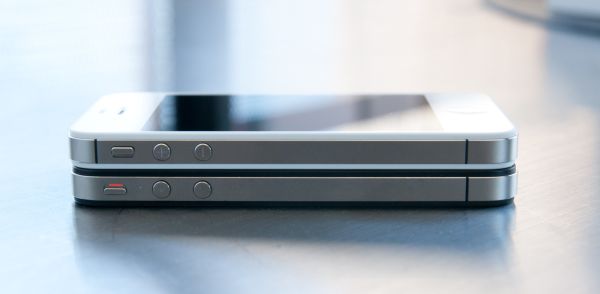
Top: iPhone 4S, Bottom: iPhone 4
The long and short of this change is that the notches have been moved around to accommodate a design with two cellular antennas. One is up at the very top, the other is at the very bottom - the two are the small U shaped portions. The result of this change is that the 4S has a very symmetrical design, as opposed to the GSM/UMTS 4’s asymmetric layout.
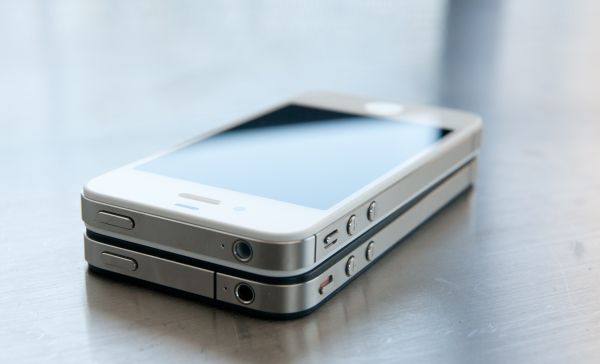 Top: iPhone 4S, Bottom: iPhone 4
Top: iPhone 4S, Bottom: iPhone 4
Just like the CDMA iPhone 4, the 4S also moves the vibrate/lock switch down the device just slightly to accommodate the new break for the top antenna band. This is the physical change that breaks compatibility with cases designed for the older GSM/UMTS iPhone 4. If you recall previously, however, Apple refreshed its bumpers with a new “Universal” line around the time of the CDMA iPhone 4 launch. At that time, case makers also followed suit with a larger vibrate/lock switch port. The result is that if you have a “universal” case created after the launch of the CDMA iPhone 4, you likely won’t need a new one for the 4S.
I say likely because some cases that cover the front of the 4S and are universal might not work as well owing to a small change in the placement of the 4S’ ambient light sensor. It’s going to be a case by case basis to determine which 4 cases that cover the front of the display work with the 4S.
The rest of the 4S exterior is superficially identical to its predecessor, which has become something of a point of contention for shoppers who like being able to identify themselves as owning a 4S, as opposed to a 4. There are, however, subtle differences you can leverage to tell the 4S from its two 4 brethren. The 4S includes the regulatory (FCC, recycling, European Conformity, e.t.c.) logos below its model numbers and FCC ID. The CDMA 4 doesn’t include those logos. Again, the GSM/UMTS 4 is alone with its three-notch stainless steel bands. It is admittedly curious that Apple hasn’t decided to make some other larger change to distinguish the 4S from the other two - there’s no mention of 4S anywhere on the phone. The iPhone 3G and 3GS were famously distinguished from each other by the inclusion of chrome iconography on the back. I fully expect Apple to update their identifying iPhone page with basically the above information at some point in time, but to say that the 4S is identical to the previous device is disingenuous.
The 4S design is without a doubt, however, an evolution of the CDMA iPhone 4’s design. Like the latter, the 4S includes the same improved vibration unit instead of the counterweight vibrator that most smartphones include. The result is a virtually silent, completely smooth vibrate, instead of the louder rattle and sharp acceleration that accompanies the counterweight vibration. The result is much less conversation-interrupting noise when the 4S vibrates during a call, and less intrusive notification.
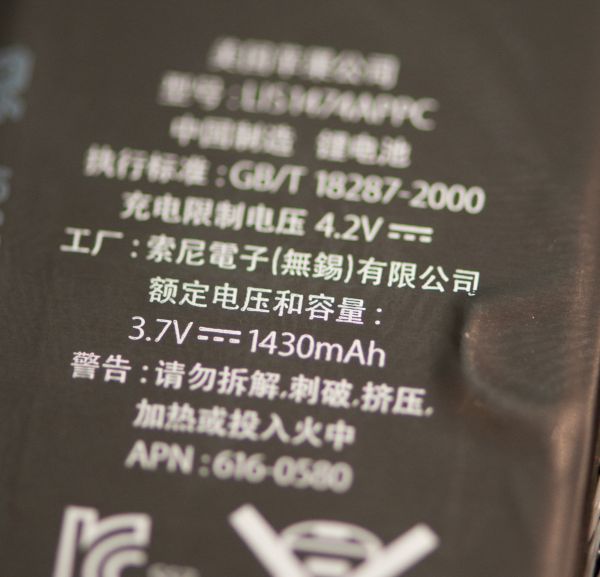
Battery capacity up to 1430 mAh
The other subtle change is an extremely small jump in battery capacity, from 1420 mAh in the 4 to 1430 mAh in the 4S. This is a very small change that boosts the capacity in watt-hours from 5.25 to 5.3. In addition the 4S puts on a little bit of weight, from 137 to 140 grams, but again nothing major.
Even the 4S packaging is basically the same as prior versions, including the same design and contents. Inside you get the phone, dock cable, headset mic, and the same smaller 5V, 1A charger that came with the 4.
| Physical Comparison | |||||||
| Apple iPhone 4 | Apple iPhone 4S | HTC Sensation | Samsung Galaxy Nexus | Samsung Galaxy S 2 | |||
| Height | 115.2 mm (4.5") | 115.2 mm (4.5") | 126.3 mm (4.97") | 135.5 mm | 125.3 mm (4.93") | ||
| Width | 58.6 mm (2.31") | 58.6 mm (2.31") | 65.5 mm (2.58") | 67.9 mm | 66.1 mm (2.60") | ||
| Depth | 9.3 mm ( 0.37") | 9.3 mm ( 0.37") | 11.6 mm (0.46") | 8.94 mm | 8.49 mm (0.33") | ||
| Weight | 137 g (4.8 oz) | 140 g (4.9 oz) | 148 g (5.22 oz) | 135 g | 115 g (4.06 oz) | ||
| CPU | Apple A4 @ ~800MHz Cortex A8 | Apple A5 @ ~800MHz Dual Core Cortex A9 | 1.2 GHz Dual Core Snapdragon MSM8260 | 1.2 GHz TI OMAP 4460 Dual Core Cortex A9 | 1.2 GHz Exynos 4210 Dual Core Cortex A9 | ||
| GPU | PowerVR SGX 535 | PowerVR SGX 543MP2 | Adreno 220 | PowerVR SGX 540 | ARM Mali-400 | ||
| RAM | 512MB LPDDR1-400 | 512MB LPDDR2-800 | 768 MB LPDDR2 | 1GB LPDDR2 | 1 GB LPDDR2 | ||
| NAND | 16GB or 32GB integrated | 16GB, 32GB or 64GB integrated | 4 GB NAND with 8 GB microSD Class 4 preinstalled | 16GB or 32GB NAND integrated | 16 GB NAND with up to 32 GB microSD | ||
| Camera | 5MP with LED Flash + Front Facing Camera | 8MP with LED Flash + Front Facing Camera | 8 MP AF/Dual LED flash, VGA front facing | 5 MP AF with LED flash, 1.3MP front facing | 8 MP AF/LED flash, 2 MP front facing | ||
| Screen | 3.5" 640 x 960 LED backlit LCD | 3.5" 640 x 960 LED backlit LCD | 4.3" 960 x 540 S-LCD | 4.65" 1280 x 720 Super AMOLED | 4.27" 800 x 480 SAMOLED+ | ||
| Battery | Integrated 5.254Whr | Integrated 5.291Whr | Removable 5.62 Whr | Removable 6.475 Whr | Removable 6.11 Whr | ||


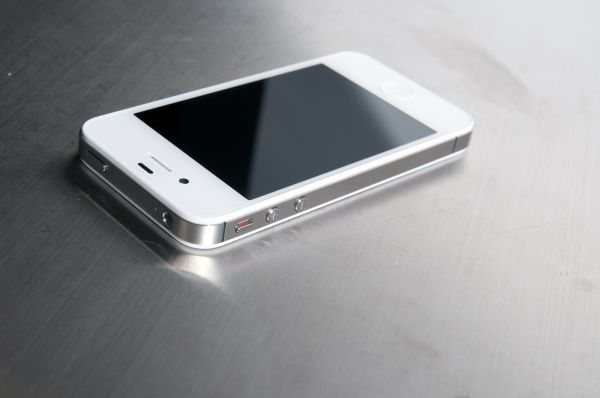

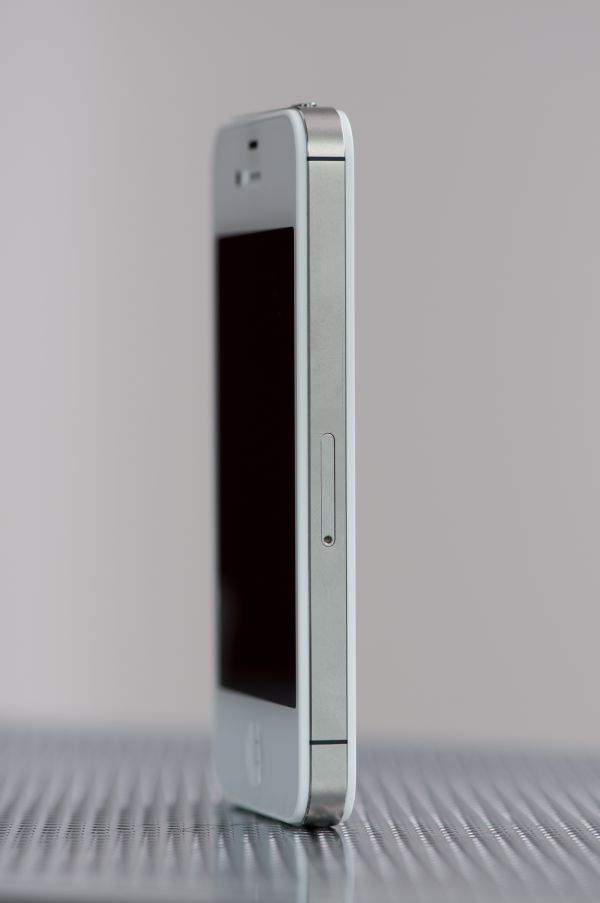














199 Comments
View All Comments
Davabled - Monday, October 31, 2011 - link
With Field test enabled, do numbers closer to zero indicate a better connection? (I'm referring to the numbers that replace the bars in the upper left corner)Anand Lal Shimpi - Monday, October 31, 2011 - link
Correct :)Take care,
Anand
Formul - Monday, October 31, 2011 - link
why the huge drop from iPad 2 to iPhone 4S in the GL benchmark pro? its only about 30% performance .... any explanation?Anand Lal Shimpi - Monday, October 31, 2011 - link
Because the number was incorrect :-P Fixed now :)Take care,
Anand
ZebuluniteX - Monday, October 31, 2011 - link
Great review as always Anand!In addition to the GL benchmark pro results Formul mentioned, I was also surprised to see the Motorola Droid RAZR for some reason do far better than other Gingerbread-based Android smartphones. It is listed as using different version of Android (2.3.5 vs 2.3.4 or older), but given that very similar results were shown between the iPhone 4S and Honeycomb-running Galaxy Tab 8.9 in your 'iPhone 4S Preliminary Benchmarks' article (where the 4S was a bit slower than the Galaxy Tab in SunSpider, and marginally faster in BrowserMark), I'm guess those are just mislabeled Galaxy Tab results. Is that the case?
Anand Lal Shimpi - Monday, October 31, 2011 - link
Thank you - be sure to thank Brian Klug as well, he really did the bulk of the heavy lifting here. I just popped in to talk about silicon and battery life.The RAZR numbers are what we ran at the RAZR announcement: http://www.anandtech.com/show/4981/motorola-droid-...
The improvement is likely due to an updated browser from Motorola. I included those numbers effectively as a placeholder until Ice Cream Sandwich arrives :)
Take care,
Anand
ZebuluniteX - Tuesday, November 1, 2011 - link
Ah, thanks for the clarification, I missed that article. Hmm, that's interesting that, apparently, Motorola "ported" Honeycomb or Ice Cream Sandwich's browser optimizations to Gingerbread (or at least I assume that's what happened)...I'm in the market for a smartphone, and while I was leaning towards the 4S since I already am in the Apple ecosystem via an iPod Touch 2G, before pulling the trigger I wanted to read the Anandtech take on it. The review was excellent as always - thanks again to both you and Brian!
Formul - Monday, October 31, 2011 - link
that was fast! i knew something was not right as there was no mention of this in the text :-)thanks for another great review, keep up the good work! :-)
zanon - Monday, October 31, 2011 - link
The article wrote "The expectation that Apple will always deliver more than just a hardware upgrade is likely what made Siri a 4S exclusive."While only time will tell for sure, it seems quite possible that graduated ramp up had a bigger role to play here. As you say, most of the heavy duty lifting for Siri is going on server-side, and in turn local processing needs aren't too bad. However, the natural flip side of that of course is that the server-side infrastructure is required for the service to work at all, and resources aren't unlimited there either. Even with it limited purely to 4S users, Siri still had some availability problems in the first few days as millions activated and tried to user it simultaneously. It's not hard to imagine what would have happened if every single one of the tens of millions able to upgrade to iOS 5 *also* tried to start using it immediately. Apple has built a huge data center and that's all well and good, but nothing substitutes for actual working experience when it comes to massive software services.
By limiting the initial rollout, Apple can do performance profiling, get an idea of average loads after initial "let's try it" dies down, and so forth. Staggering a rollout also means being able to plan for the general load rather then suffering the classic and well known double-bind of
A) Building for a peak load, and ending up being left with a lot of extraneous hardware that barely gets used.
B) Building for the average, then suffering from embarrassing and headline generating outages for a week or two.
It's true they could just decide to keep it 4S only, but given they are still selling the iPhone 4, and probably make plenty of profit on that now very mature device, I think there is a decent chance they'll roll it out to a wider audience down the road.
Also, a few typos:
Page 2:
I think the phrase is "pretty much par for the *course* for Apple..." rather then "par for the case".
Pg 9, WiFi:
"...newest WLAN, Bluetooth, and FM *cobo* chip" should I think be "combo".
Pg 15:
...4S, without a (big blank, presumably some sentence was supposed to go here?)
Pg 16:
"aren't simply *academical*" should be "academic".
Again, great review, thank you.
Anand Lal Shimpi - Monday, October 31, 2011 - link
That's a very good point, I will add it to the discussion. The sinister view is to assume Apple did it to differentiate, the balanced view takes into account infrastructure, which is exactly what you did here :)And thanks for the corrections :)